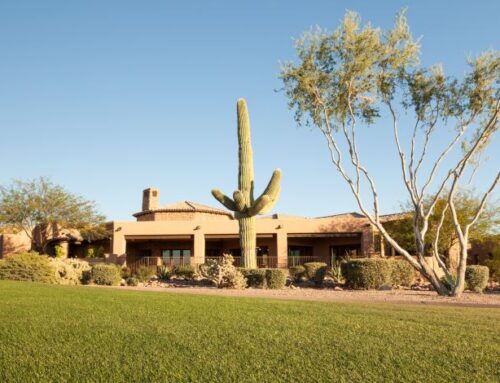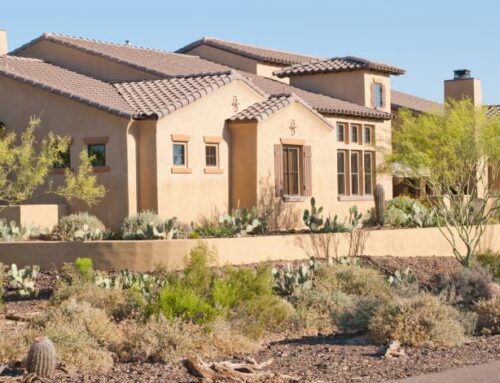When searching for a mortgage, low-interest rates tend to be one of the most significant factors for potential homebuyers or homeowners looking to refinance. That’s because even a quarter of a percentage point can mean you’ll have to shell out thousands of dollars in interest payments during the length of the loan.
As you go through the mortgage lending process, your current interest rate may not be the same as you initially saw. Mortgage rates fluctuate quickly—they may move up or down from one day to the next or multiple times on the same day. Various factors such as housing demand, the fed rate hike and other market trends play a major role in the fluctuation of mortgage rates.
What Is A Mortgage Rate Lock?
A mortgage rate lock freezes your interest rate in place and protects you against increasing rates from the time you apply for a mortgage until the closing process is complete. With a rate lock, borrowers have the opportunity to secure the best interest they feel they can get. If rates increase during that time, you’ll receive the locked-in rate.
Fortunately, through a mortgage rate lock, most lenders will allow you to secure the best interest rate, protecting you from market fluctuations. Keep reading to learn more about the ins and outs of mortgage rate locks and why locking in your mortgage rate may benefit you.
However, you may find yourself in a catch-22 situation.
If you lock in at a specific rate and interest rates go down, you, unfortunately, won’t be able to benefit from the lower rate unless the lender offers a float-down option. A float-down option allows you to break the lock and secure the lower rate. Keep in mind that float-down options generally come with an additional fee.
How Long Can You Lock In A Mortgage Rate?
Mortgage rate locks do not last throughout the entire process. The specific time frame may vary depending on factors such as the lender’s requirements, the loan type, the loan’s terms and where the property is located. That said, the typical mortgage rate lock period lasts between 15 to 60 days.
However, at Arizona Central Credit Union, members can secure a locked rat for 90 days. Although, the property must be found during the first 60 days of the lock period. This allows 30 days to finalize and fund the loan. Lock extensions are not allowed with this feature1.
If you do lock your rate in, it’s crucial that you aren’t reckless with your credit or significantly change your financial situation. Since your interest rate factors in your credit score and income, you may cause the lender to reevaluate your application, and they may void the rate lock. For example, if you decide to open a new line of credit while trying to secure a mortgage, you may alter your debt-to-income ratio (DTI), which may change your interest rate.
When Can You Lock In A Mortgage Rate?
The window when you can start to lock your mortgage’s interest rate may vary depending on the lender. Generally speaking, most lenders will allow you to secure the rate between the time the loan application has been approved and no less than five days before closing.
As mentioned previously, the rate lock contains an expiration date, where current interest rates may be higher or lower than your initial one. That’s why it’s important to carefully monitor interest rates throughout your homebuying journey to ensure you’ll receive the lowest interest for your mortgage.
We recommend conducting research within the past few months to gauge the market trends. If rates have climbed, it may be in your best interest to lock in sooner rather than later. On the other hand, if rates are on a downward trend, you may want to wait or consider the float-down option.
Keep in mind that it’s challenging to predict whether or not rates will increase or decrease. Waiting to lock in your interest rate can be risky, and even a slight increase may cost you thousands of dollars in interest payments over the loan’s term.
How Much Does It Cost To Lock A Mortgage Rate?
The cost to lock in your interest rate may vary depending on the lender, the total loan value, terms and the lock length. Some lenders may even consider it “free.” They’ll advertise it as free, but the fee will be included in the interest rate they offer you.
Mortgage rate lock fees are measured through basis points (bps). For example, your rate lock comes with 25 bps or 0.25% of the total loan value. A 0.25% fee on a $325,000 loan would result in a nearly $813 fee.
Should You Lock In Your Mortgage Rate?
We stress the importance of weighing the benefits versus the drawbacks when determining financial decisions. Regarding mortgage rate locks, the benefits far outweigh the disadvantages. Mortgage rate lock fees will cost you pennies compared to the thousands of dollars paid in interest if your rate increases.
For example, you purchased a home for $325,000 financed through a conventional loan with a 30-year term at a 4% interest rate with a 20% down payment. A slight increase of 0.25% in your interest rate will increase your monthly payment by $38, from $1,455 to $1,493. Over five years, that totals to nearly $2,300.
Compared to a mortgage rate lock at 0.25% of the 4% rate would equate to nearly $813.
When determining if you should lock in your mortgage rate, consider the following factors:
- You anticipate that rates will climb
- The rate is affordable and comparable to other lenders
- The lock’s term is long enough to get you through the closing process
- You want the security knowing your interest rate will not change throughout the homebuying process
Secure Financing Through Arizona Central Credit Union
The volatility of interest rates may heavily depend on the current housing market and the overall demand. Mortgage rate locks help protect you from market fluctuations and offer you the potential to secure the lowest interest you feel you can get.
Are you looking for financing for your new home? Consider trying Arizona Central Credit Union’s new Lock & Look Mortgage1. Lock in your interest rate before you choose your dream home. If the market rate at the time of contract acceptance is less than what you locked at the time of close, we will float down the rate. Visit our Prequalification page for more information, or contact a mortgage specialist to start your journey.
1. The lock period is 90 days. A property must be found during the first 60 days of the lock period. This allows 30 days to finalize and fund the loan. Lock extensions are not allowed with this feature. Members can re-enroll at the current market rate if a property has not been identified in the first 60 days of the lock period. Once a property is identified and the purchase contract is received, the member may take advantage of a lower interest rate if the rate for the mortgage program has dropped since the initial lock. The Float down must be exercised no less than 14 days prior to close of escrow. The Lock and Look feature does not apply to FHA, VA, USDA loan programs or to manufactured housing. This feature is subject to a minimum interest rate. It is also subject to cancellation without advanced notice.




